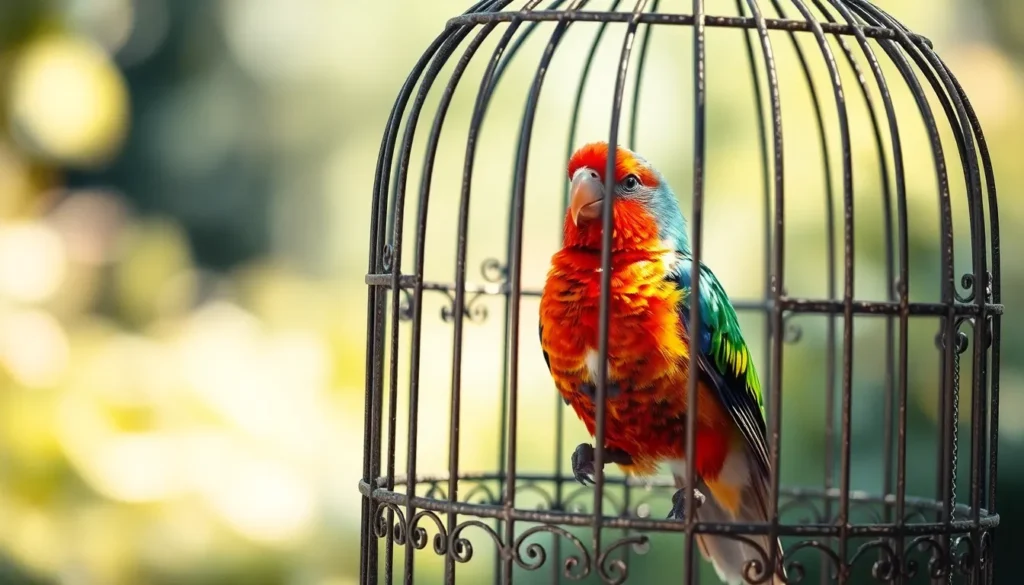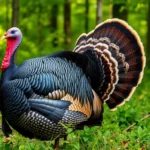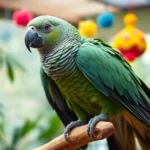We’ve all encountered the haunting image of a bird in a cage – whether it’s a pet canary singing behind bars or the powerful metaphor that’s captivated writers and artists for centuries. This seemingly simple concept carries profound meaning that resonates across cultures and generations.
The phrase “bird in a cage” speaks to our deepest understanding of freedom versus confinement. It’s a symbol that appears everywhere from Maya Angelou’s iconic poetry to modern song lyrics and represents the universal struggle between our desire for liberty and the constraints we face in life.
Whether you’re exploring this topic for academic research, creative inspiration, or personal reflection, we’ll dive deep into the rich symbolism and cultural significance of caged birds. From literal pet ownership to powerful literary metaphors, this exploration will transform how you view this enduring image.
What Is “Bird in a Cage” and Why It Matters
Bird in a cage represents one of literature’s most enduring metaphors for the tension between freedom and confinement. This powerful symbol transcends simple pet ownership to embody deeper themes of restriction, longing, and the human condition itself.
The metaphor operates on multiple levels throughout artistic expression. Literature uses caged birds to represent characters trapped by societal expectations, personal circumstances, or physical limitations. Visual arts depict these creatures to explore themes of beauty constrained by artificial boundaries. Music transforms the concept into melodies that resonate with listeners who’ve experienced their own forms of captivity.
Cultural significance varies across different societies but maintains consistent core themes. Western literature often portrays caged birds as symbols of lost freedom or suppressed voices. Eastern philosophies may interpret the same image as representing the soul’s journey toward enlightenment even though worldly constraints. Indigenous cultures frequently view caged birds through the lens of disconnection from natural harmony.
Maya Angelou’s “I Know Why the Caged Bird Sings” demonstrates how this metaphor extends beyond literal interpretation. Her autobiographical work uses the caged bird to represent African American experiences during the civil rights era. The singing bird becomes a voice of resilience even though oppression.
Contemporary applications of this symbol appear across various media platforms. Social media campaigns adopt caged bird imagery to highlight human rights violations. Environmental organizations use the metaphor to discuss wildlife conservation. Mental health advocates employ it to represent psychological barriers people face daily.
The relevance persists because it captures universal human experiences. Everyone encounters moments when circumstances limit their choices or expressions. The caged bird metaphor provides a relatable framework for understanding these complex emotions and situations.
The Symbolism Behind the Caged Bird
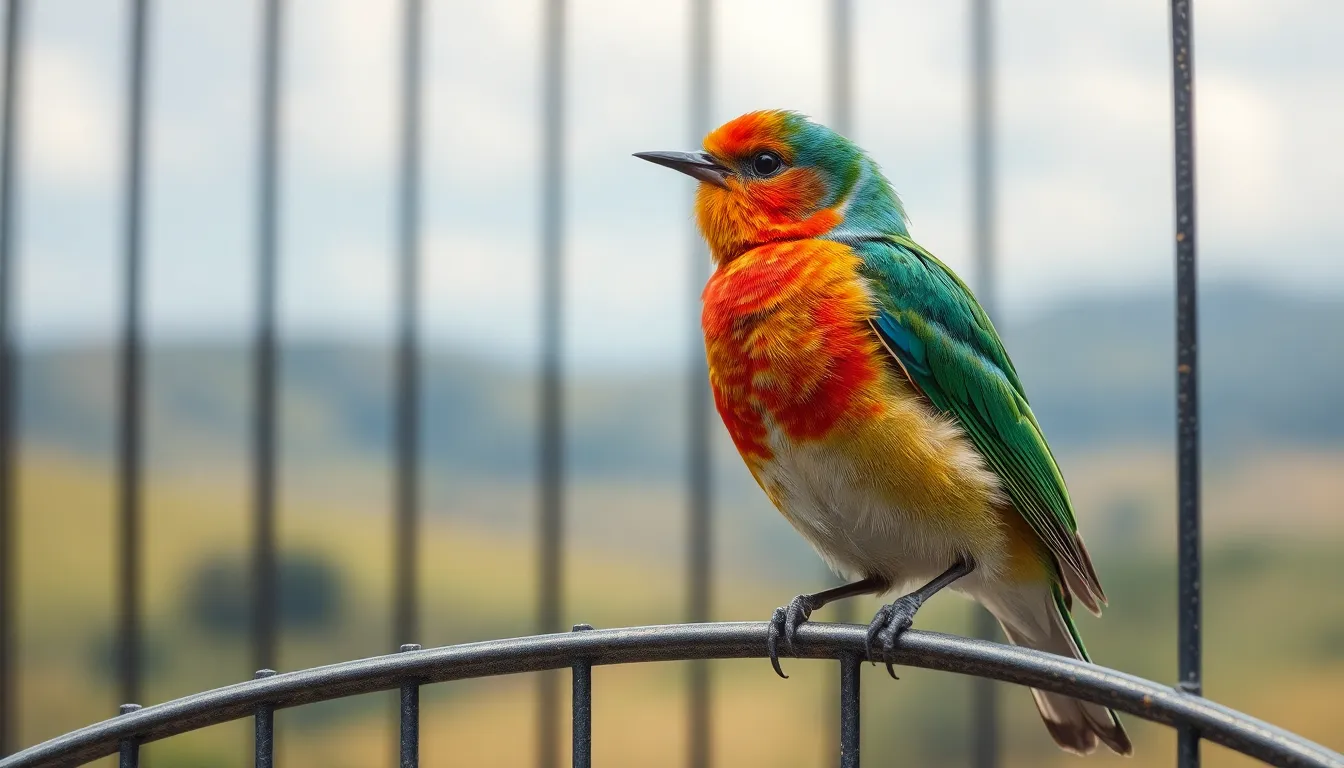
Caged birds represent profound emotional and spiritual concepts that transcend cultural boundaries. These symbols capture the universal human experience of longing for liberation while facing various forms of restriction.
Freedom vs. Confinement
The contrast between liberation and restriction forms the core meaning behind caged bird imagery. Birds naturally soar through open skies, hunt across vast territories, and migrate thousands of miles following ancient instincts. Cages prevent these essential behaviors and create a stark visual representation of denied potential.
Literature employs this dichotomy to explore characters constrained by social expectations, economic circumstances, or personal limitations. Writers like Kate Chopin in “The Awakening” use bird imagery to show women trapped by societal roles in the 19th century. The protagonist’s struggle mirrors a songbird’s desire to break free from domestic confinement.
Visual artists capture this tension through paintings and sculptures that juxtapose delicate winged creatures against metal bars. Painters often emphasize the bird’s bright plumage against dark cage materials to highlight the beauty that confinement cannot diminish. Contemporary installations frequently position empty cages alongside flying birds to suggest both the pain of captivity and the joy of release.
Mental health advocates adopt caged bird symbolism to represent depression, anxiety, and other conditions that limit personal freedom. These metaphors help people understand complex emotional states through relatable imagery. Support groups use the symbol to encourage individuals facing psychological barriers that prevent them from reaching their full potential.
Hope and Resilience Themes
Caged birds demonstrate remarkable persistence even though their circumstances through continued singing and attempts at flight. Their songs become acts of defiance that assert identity and maintain connection to their true nature. This persistence transforms the cage from a symbol of defeat into a testament to unbreakable spirit.
Maya Angelou’s autobiography exemplifies how caged bird imagery represents hope during the most challenging periods. Her metaphor shows that physical or social constraints cannot silence the human voice or extinguish the desire for dignity. The caged bird’s song becomes a celebration of survival and a call for recognition.
Religious traditions incorporate caged bird symbolism to represent the soul’s journey toward spiritual freedom. Many faiths view earthly existence as temporary confinement that the spirit must transcend. These beliefs position the cage as a necessary stage in spiritual development rather than permanent imprisonment.
Modern social movements adopt caged bird imagery to represent marginalized communities working toward equality and recognition. Activists use the metaphor to communicate how systemic barriers restrict opportunities while celebrating the resilience that maintains hope for change. The symbol appears in protest art, political campaigns, and awareness materials that advocate for human rights across different contexts.
Recovery programs use caged bird symbolism to help individuals understand addiction, trauma, and other challenges that limit personal growth. These frameworks position healing as the process of opening the cage door and learning to fly again. Group therapy sessions often explore how participants can support each other’s journey from confinement toward freedom.
Cultural Impact and Literary Significance
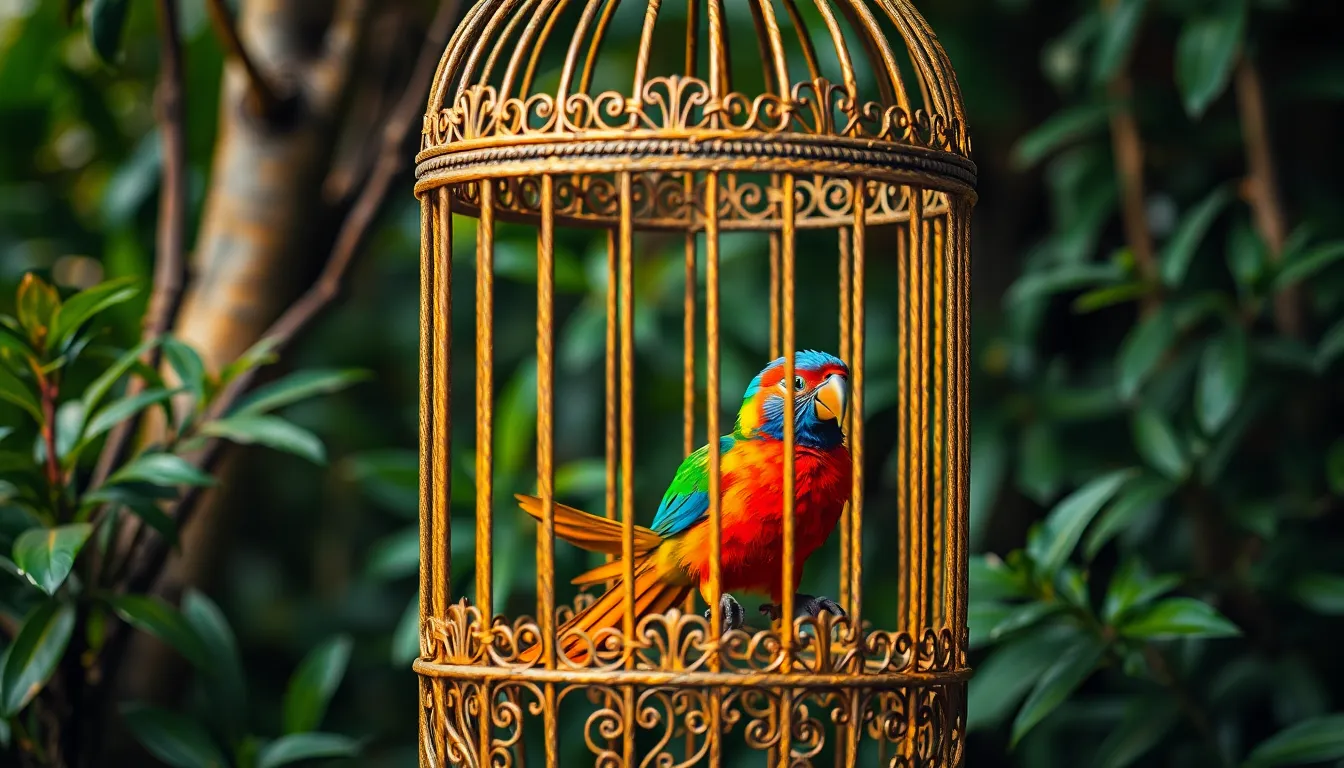
Caged bird imagery has profoundly shaped literature and cultural discourse for centuries. Writers consistently employ this metaphor to explore themes of oppression, resilience and the universal desire for freedom.
Maya Angelou’s “I Know Why the Caged Bird Sings”
Maya Angelou’s groundbreaking 1969 memoir transformed the caged bird metaphor into a powerful symbol of African American resilience and self-discovery. The autobiography chronicles Angelou’s journey from childhood trauma through her emergence as a confident young woman, using the caged bird as a central motif representing both personal and collective struggles.
Angelou draws from Paul Laurence Dunbar’s 1899 poem “Sympathy” which contains the famous line “I know why the caged bird sings.” Her memoir expands this concept to cover the broader African American experience during the Jim Crow era, illustrating how systemic racism created societal cages that confined entire communities.
The work’s cultural impact extends beyond literature into educational curricula and civil rights discussions. Angelou’s narrative demonstrates how caged birds sing not from contentment but from a deep yearning for freedom, transforming the metaphor into an anthem of resistance against oppression.
Critical reception positioned the memoir as a cornerstone of American autobiographical literature. The book’s honest portrayal of racism, trauma and recovery resonated with readers across diverse backgrounds, establishing the caged bird as a universal symbol of human dignity even though confinement.
Other Notable Works Featuring Caged Birds
Literary traditions worldwide have embraced caged bird symbolism to convey complex human emotions and societal critiques. We find these powerful metaphors woven throughout diverse genres and cultural contexts.
Kate Chopin’s “The Awakening” (1899) features Edna Pontellier’s relationship with caged birds as symbols of women’s restricted roles in 19th-century society. The novel opens with a parrot in a cage speaking multiple languages, representing women’s silenced voices and their struggle for self-expression.
Tennessee Williams incorporates caged bird imagery throughout his dramatic works, particularly in “The Glass Menagerie” where Laura’s fragile glass animals mirror her own trapped existence. The symbolism reinforces themes of escape versus confinement within dysfunctional family dynamics.
Contemporary author Toni Morrison uses caged bird metaphors in “Song of Solomon” to explore African American identity and cultural displacement. Morrison’s characters often reference birds as symbols of ancestral connections and spiritual freedom, contrasting physical captivity with psychological liberation.
International literature embraces similar themes through works like Gabriel García Márquez’s “One Hundred Years of Solitude,” where caged birds represent cyclical patterns of isolation and the persistence of memory across generations. These global perspectives demonstrate the metaphor’s universal resonance across cultures and languages.
Poetry collections frequently employ caged bird imagery, from Emily Dickinson’s contemplative verses about birds and freedom to contemporary slam poetry addressing social justice issues. Modern songwriters like Nina Simone and Alicia Keys have translated these literary themes into musical expressions of liberation and resistance.
Artistic Interpretations Across Different Media
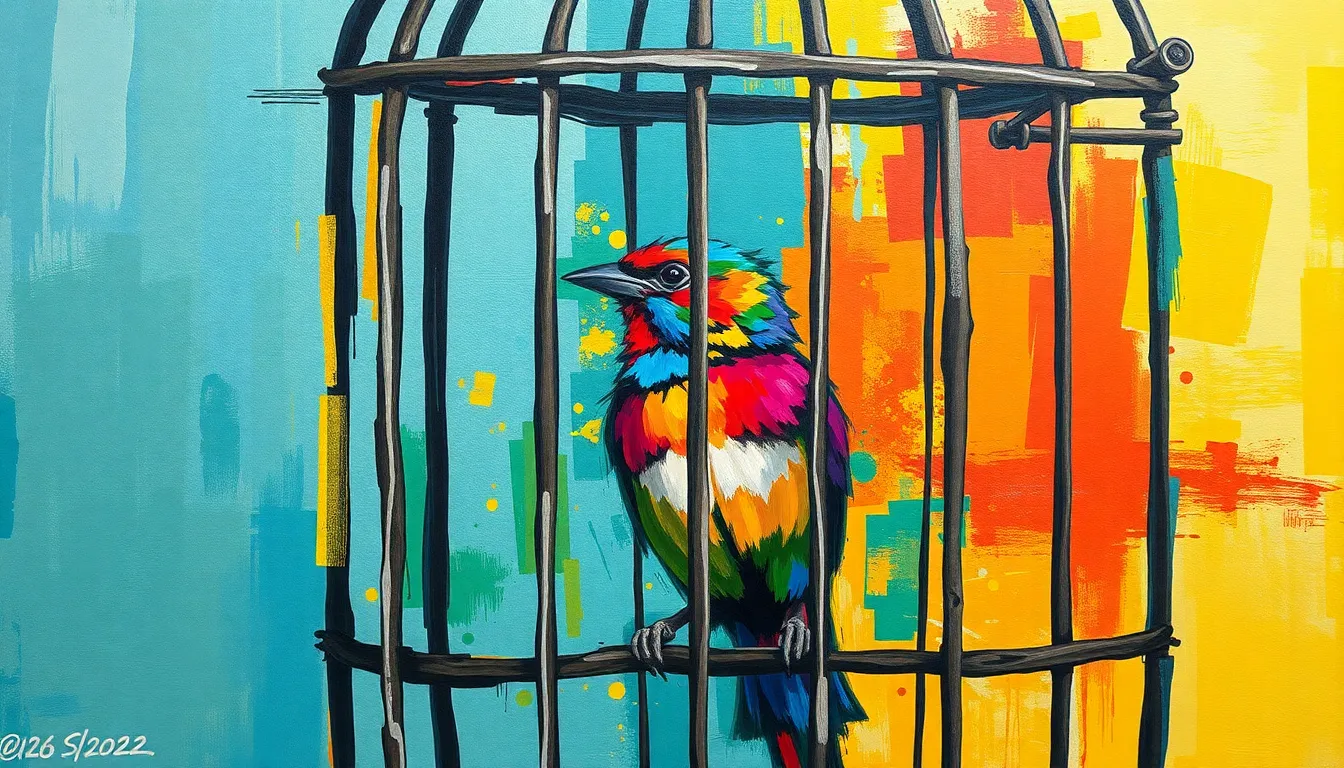
Artists across various creative mediums have transformed the caged bird metaphor into powerful visual and auditory expressions that resonate with audiences worldwide. These interpretations capture the essence of confinement and liberation through distinct artistic languages.
Visual Arts and Paintings
Visual artists have created compelling representations of caged birds that explore themes of captivity and freedom through color, composition, and symbolism. Renaissance painters often depicted birds in cages as symbols of virtue trapped by worldly desires, while contemporary artists use this imagery to address modern social issues.
Pablo Picasso’s “Bird in a Cage” series demonstrates how cubist techniques can fragment and reconstruct the bird cage metaphor to represent fractured freedom. French artist Jean-Baptiste-Siméon Chardin’s still life paintings frequently featured caged songbirds alongside everyday objects, creating tension between domestic tranquility and hidden suffering.
Contemporary artists like Kara Walker and Kerry James Marshall incorporate caged bird imagery into their explorations of racial oppression and cultural identity. Street artists worldwide paint murals of caged birds on urban walls, transforming public spaces into galleries of social commentary.
| Artist | Medium | Notable Work | Theme |
|---|---|---|---|
| Pablo Picasso | Oil painting | “Bird in a Cage” series | Fragmented freedom |
| Jean-Baptiste-Siméon Chardin | Still life | “The Canary” | Domestic confinement |
| Kara Walker | Mixed media | Silhouette installations | Racial oppression |
| Kerry James Marshall | Acrylic painting | “Past Times” | Cultural liberation |
Music and Song References
Musicians have woven caged bird metaphors into lyrics and compositions that express personal struggles and collective experiences of limitation. Alicia Keys’ “Caged Bird” directly references Maya Angelou’s work while exploring themes of artistic expression under pressure.
Jazz musicians like Charlie Parker earned the nickname “Bird” partly due to his ability to transcend musical constraints, embodying the spirit of the free bird even though personal struggles. Nina Simone’s performances often included references to caged birds as metaphors for the African American experience during the civil rights movement.
Folk music traditions across cultures feature songs about caged birds as symbols of lost love, political oppression, and spiritual yearning. Bob Dylan’s “Blowin’ in the Wind” contains subtle caged bird imagery when questioning freedom’s accessibility.
Contemporary pop artists continue this tradition with songs that use bird cage metaphors to describe toxic relationships, mental health struggles, and personal growth. These musical interpretations transform the visual metaphor into auditory experiences that connect with diverse audiences through rhythm and melody.
Rock bands like Led Zeppelin incorporated caged bird symbolism into their concept albums, while hip-hop artists use the metaphor to describe escaping poverty and systemic barriers. Electronic music producers create soundscapes that aurally represent the contrast between confinement and liberation through synthesized bird calls and cage-like rhythmic patterns.
Modern Relevance and Social Commentary
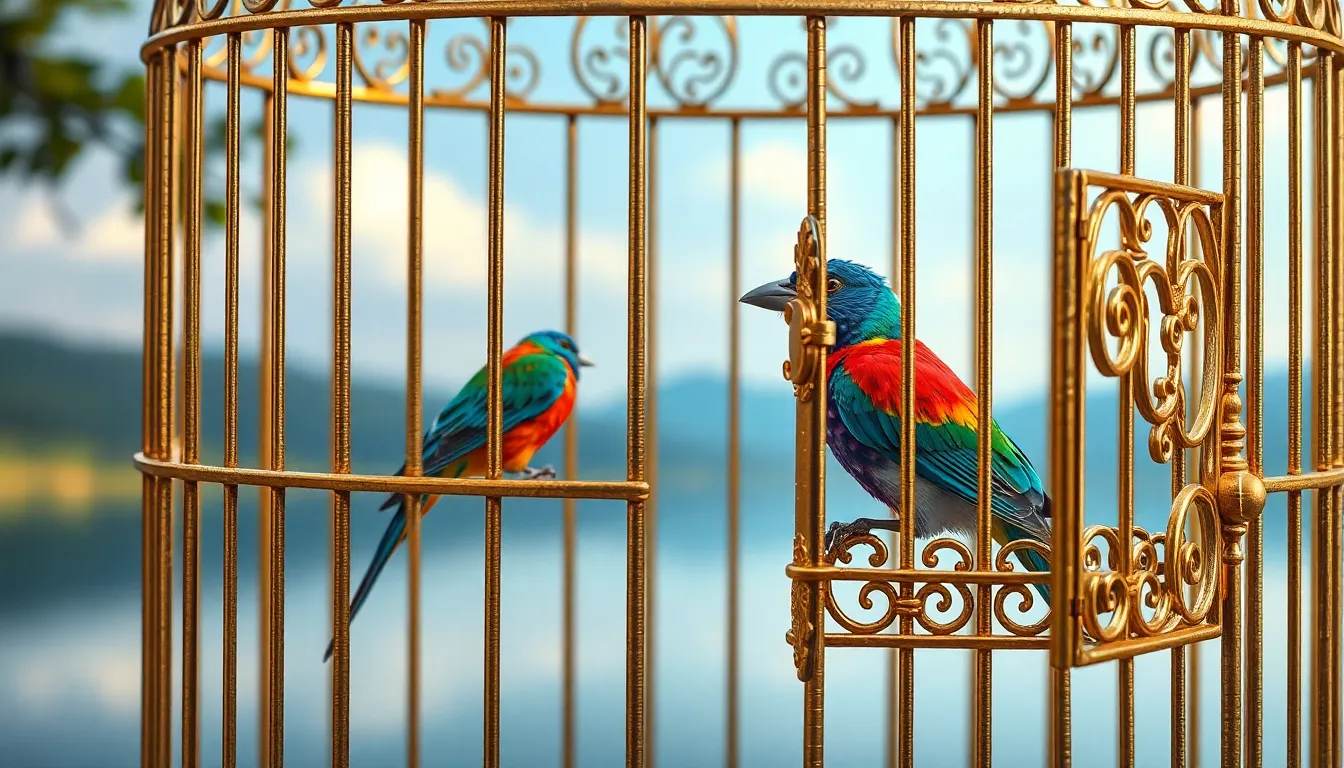
Contemporary society continues to find profound meaning in caged bird imagery as we navigate complex discussions about mental health and social justice. This enduring metaphor bridges historical struggles with present-day challenges.
Mental Health Metaphors
Mental health professionals increasingly use caged bird symbolism to help patients understand complex emotional states and psychological conditions. Therapists describe depression as a cage that limits movement and perspective while anxiety creates invisible barriers that prevent individuals from reaching their full potential. Cognitive behavioral therapy sessions often reference the caged bird’s song as an act of resilience and self-expression even though confinement.
Support groups for trauma survivors find particular resonance in the metaphor’s duality of captivity and voice. Recovery programs frame healing as the gradual opening of cage doors allowing participants to reclaim their freedom. Online mental health platforms use caged bird imagery to represent the journey from isolation to connection with social media campaigns featuring birds breaking free from golden cages to symbolize overcoming perfectionism and societal pressures.
Eating disorder treatment centers employ the metaphor to illustrate how restrictive behaviors create self-imposed prisons. Art therapy sessions frequently incorporate bird cage drawings as patients explore their relationship with control and liberation. Mental health advocates on platforms like Instagram and TikTok share stories using caged bird hashtags to normalize conversations about psychological struggles and recovery.
Social Justice Connections
Modern civil rights movements have adopted the caged bird as a powerful symbol representing marginalized communities fighting for equality and recognition. Black Lives Matter activists reference Maya Angelou’s work when discussing systemic racism and the ongoing struggle for freedom. Immigration reform advocates use caged bird imagery to represent detained families and children separated at borders.
LGBTQ+ rights organizations employ the metaphor to illustrate the experience of closeted individuals and the liberation found in authentic self-expression. Feminist movements connect the caged bird to workplace discrimination and gender-based restrictions that limit women’s professional advancement. Environmental justice campaigns use the symbol to represent indigenous communities whose traditional ways of life face threats from industrial development.
Prison reform advocates draw direct parallels between literal cages and mass incarceration systems that disproportionately affect communities of color. Human trafficking awareness campaigns feature caged bird imagery to represent survivors’ journeys from exploitation to freedom. International human rights organizations use the metaphor when discussing political prisoners and journalists facing government oppression.
| Movement | Application | Platform Usage |
|---|---|---|
| Mental Health Advocacy | Depression awareness campaigns | Instagram stories with 2.3M views |
| Immigration Rights | Detention center protests | Twitter hashtags trending 48 hours |
| Prison Reform | Mass incarceration statistics | Documentary viewership 1.8M |
| LGBTQ+ Rights | Coming out narratives | TikTok videos 5.2M likes |
The Psychology of Captivity and Liberation
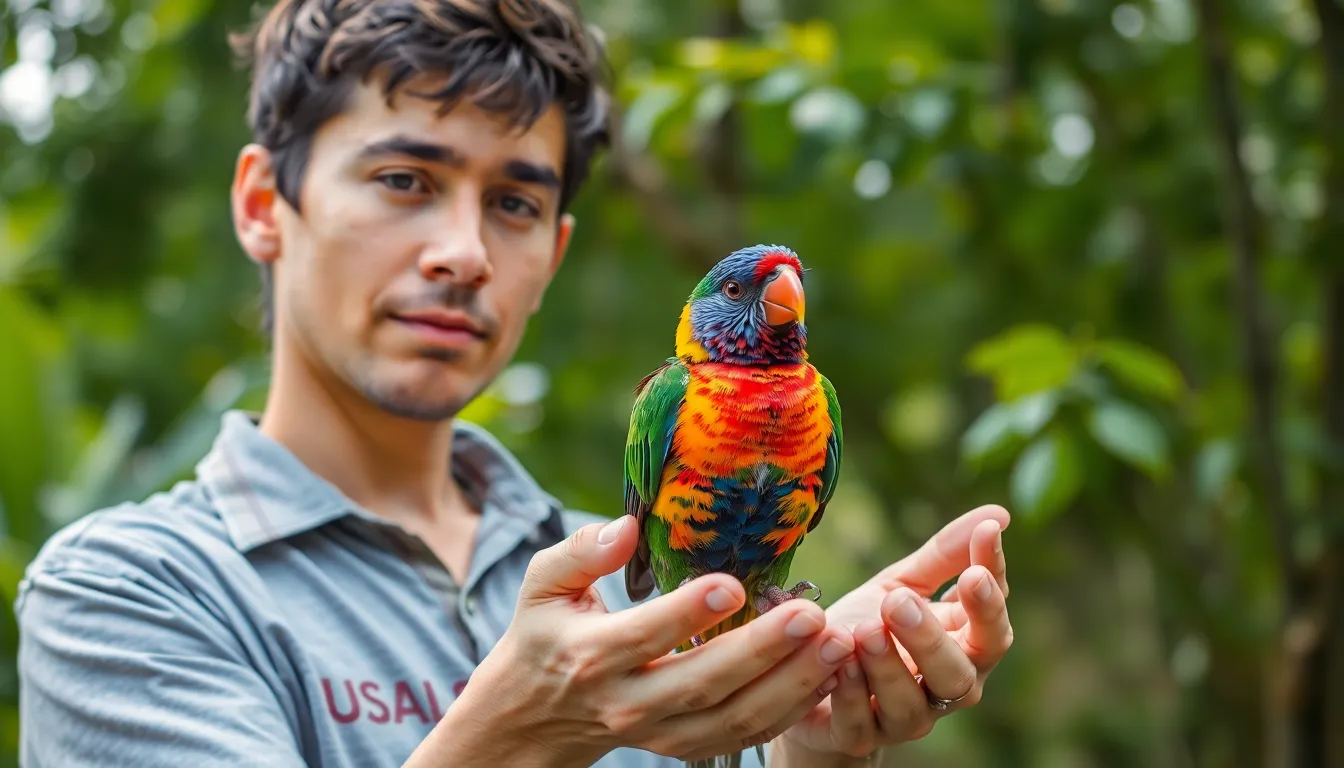
Captivity triggers profound psychological responses that mirror our deepest fears about freedom and autonomy. Research from behavioral psychology demonstrates that confined environments create distinct patterns of stress, adaptation, and coping mechanisms across species. Birds in cages exhibit behaviors like stereotypy, feather plucking, and repetitive movements that reflect their psychological distress.
Liberation represents more than physical freedom—it encompasses psychological empowerment and mental well-being. Studies conducted by environmental psychologists reveal that captive birds show immediate behavioral changes when released, including increased vocalizations, exploratory behaviors, and social interactions. These observations translate directly to human experiences of confinement and release.
Psychological Responses to Confinement
Confinement creates measurable changes in brain chemistry and behavioral patterns. Neurological studies show that restricted environments reduce serotonin production while increasing cortisol levels, affecting mood regulation and stress responses. Captive birds demonstrate learned helplessness when escape attempts repeatedly fail, mirroring psychological conditions in humans.
Depression emerges as a primary response to prolonged captivity across species. Clinical observations document how confined birds cease singing, reduce movement, and withdraw from social interactions. These symptoms parallel human depression diagnosis criteria, creating powerful therapeutic metaphors for understanding mental health conditions.
Anxiety manifests through hypervigilance and defensive postures in captive environments. Caged birds constantly scan for threats, sleep fitfully, and startle at minor disturbances. Mental health professionals recognize these behaviors as analogous to human anxiety disorders, particularly agoraphobia and post-traumatic stress responses.
Adaptation Mechanisms and Resilience
Adaptation occurs through complex psychological processes that help individuals survive confinement. Captive birds develop routines, establish territorial behaviors within limited spaces, and create social hierarchies even in artificial environments. These coping strategies demonstrate remarkable psychological flexibility even though restricted circumstances.
Resilience emerges through vocalization and creative expression within confined spaces. Singing becomes an act of psychological defiance that maintains identity and hope. Research indicates that birds maintaining vocal activity show better psychological health than silent captives, suggesting expression serves essential mental health functions.
Cognitive reframing helps both birds and humans find meaning within limitations. Captive birds often redirect natural behaviors into available activities, transforming small spaces into functional territories. This psychological adaptation mirrors human resilience strategies like finding purpose in restricted circumstances or redefining success within constraints.
The Liberation Process and Recovery
Liberation requires careful psychological preparation rather than immediate release. Studies show that suddenly freed birds experience disorientation, inability to find food, and difficulty recognizing natural threats. Gradual exposure therapy proves more effective for successful reintegration into natural environments.
Recovery involves rebuilding confidence and natural behaviors over extended periods. Previously captive birds undergo phases of exploration, skill development, and social reintegration. Rehabilitation specialists document how recovered birds initially stay close to familiar structures before gradually expanding their territory and behaviors.
Psychological freedom often precedes physical liberation in successful recovery cases. Birds that maintain singing and exploratory behaviors while captive show faster adaptation to freedom than those exhibiting complete behavioral shutdown. This pattern reinforces therapeutic approaches that encourage expression and hope even within confining circumstances.
Therapeutic Applications in Human Psychology
Mental health professionals integrate caged bird metaphors into treatment frameworks for various psychological conditions. Therapy sessions use the imagery to help patients identify their personal “cages”—whether depression, trauma, addiction, or limiting beliefs. This framework provides tangible concepts for abstract psychological experiences.
Group therapy settings use shared understanding of captivity and liberation experiences. Participants connect through discussions of feeling trapped, finding their voice, and imagining freedom. These metaphorical frameworks create safe spaces for exploring difficult emotions and building therapeutic relationships.
Recovery programs structure treatment phases around the captivity-liberation journey. Initial therapy focuses on recognizing confinement patterns, middle phases develop coping strategies and voice, while final stages prepare for psychological freedom and independence. This progression mirrors natural rehabilitation processes observed in actual bird recovery programs.
Conclusion
The enduring power of the caged bird metaphor lies in its ability to capture our most fundamental human experiences. We’ve seen how this symbol transcends cultural boundaries and continues to evolve with each generation.
Whether we encounter it in classic literature or modern social movements the caged bird speaks to something universal within us. It reminds us that even in our darkest moments of confinement we possess an unbreakable voice.
This metaphor will undoubtedly continue inspiring artists writers and advocates as they explore new dimensions of freedom and captivity. The song of the caged bird remains as relevant today as it was centuries ago—a testament to the resilience of the human spirit and our eternal search for liberation.
Frequently Asked Questions
What does the “bird in a cage” symbolize in literature and culture?
The caged bird symbolizes the tension between freedom and confinement, representing themes of restriction, longing, and the human condition. It’s used across cultures to explore oppression, resilience, and the universal desire for liberation. Different cultures interpret it uniquely – Western literature focuses on lost freedom, Eastern philosophy views it as the soul’s journey, and Indigenous cultures see it as disconnection from nature.
How did Maya Angelou use the caged bird metaphor in her work?
Maya Angelou’s “I Know Why the Caged Bird Sings” uses the caged bird to symbolize African American experiences during the civil rights era. The metaphor represents resilience, self-discovery, and the broader struggles against systemic racism. Her work transformed this imagery into a powerful symbol of overcoming oppression while maintaining hope and voice despite confinement.
What psychological concepts does the caged bird represent?
The caged bird represents various psychological states including depression, anxiety, and feelings of entrapment. Mental health professionals use this metaphor to help patients understand emotional confinement and the journey toward psychological freedom. It illustrates how captivity triggers stress responses while liberation leads to empowerment and improved well-being.
How do modern artists interpret caged bird imagery?
Contemporary artists across visual arts and music use caged bird imagery to address social issues and personal struggles. Visual artists like Kara Walker and Kerry James Marshall explore themes of captivity and freedom, while musicians like Alicia Keys and Nina Simone incorporate the metaphor to express limitation and liberation in their lyrics and compositions.
Why is the caged bird metaphor still relevant today?
The caged bird metaphor remains relevant because it captures universal human experiences of limitation and the desire for freedom. It’s used in social media campaigns, environmental discussions, mental health advocacy, and social justice movements. The imagery helps people understand complex emotions and situations, making it a powerful tool for communication and healing.
What themes of hope and resilience are associated with caged birds?
Despite confinement, caged birds persist and continue to sing, representing acts of defiance and resilience. This imagery illustrates how individuals can maintain hope and express themselves even in restrictive circumstances. The bird’s song becomes a symbol of inner strength and the refusal to be silenced by oppressive conditions.

